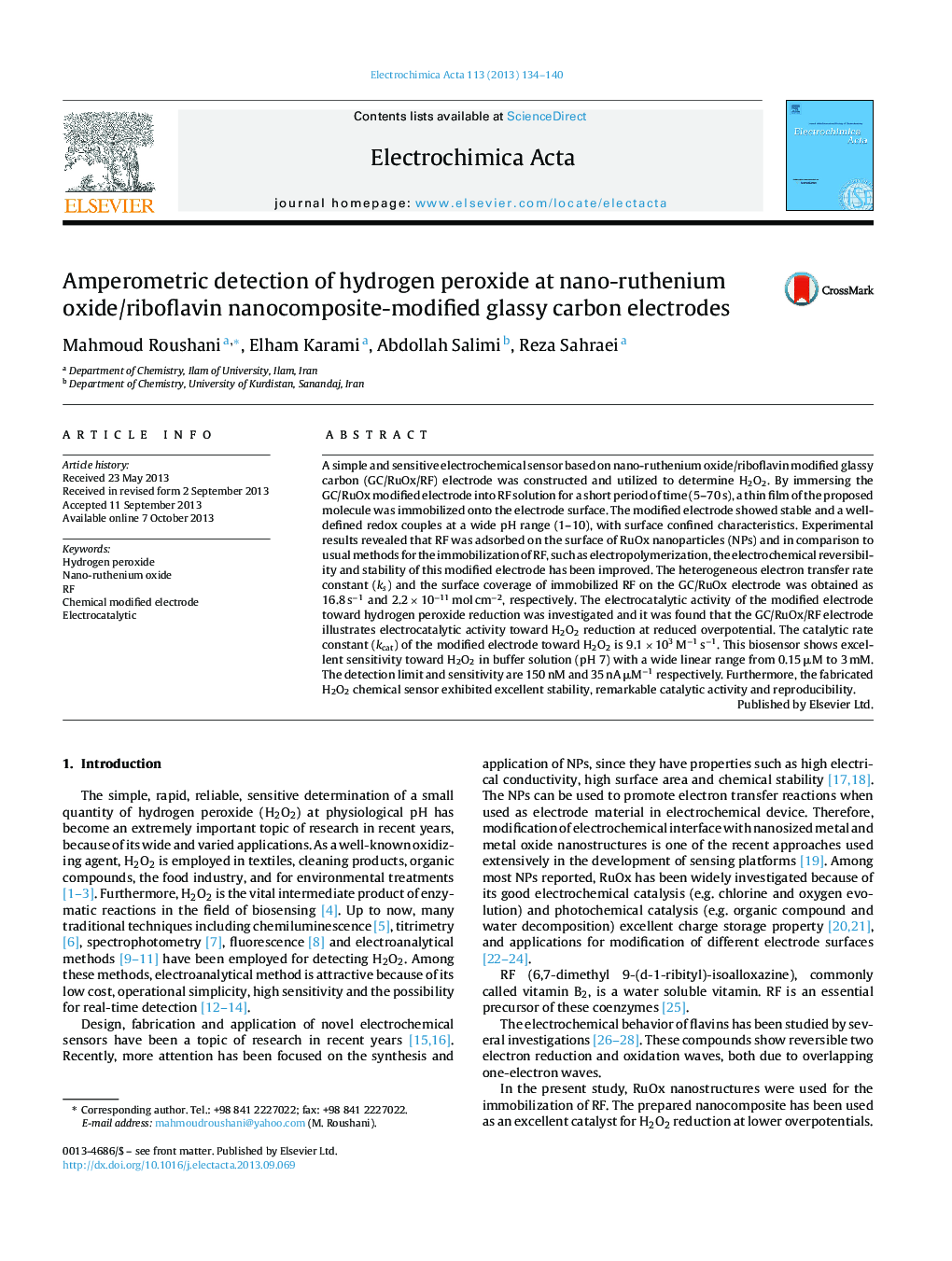| Article ID | Journal | Published Year | Pages | File Type |
|---|---|---|---|---|
| 6614607 | Electrochimica Acta | 2013 | 7 Pages |
Abstract
A simple and sensitive electrochemical sensor based on nano-ruthenium oxide/riboflavin modified glassy carbon (GC/RuOx/RF) electrode was constructed and utilized to determine H2O2. By immersing the GC/RuOx modified electrode into RF solution for a short period of time (5-70 s), a thin film of the proposed molecule was immobilized onto the electrode surface. The modified electrode showed stable and a well-defined redox couples at a wide pH range (1-10), with surface confined characteristics. Experimental results revealed that RF was adsorbed on the surface of RuOx nanoparticles (NPs) and in comparison to usual methods for the immobilization of RF, such as electropolymerization, the electrochemical reversibility and stability of this modified electrode has been improved. The heterogeneous electron transfer rate constant (ks) and the surface coverage of immobilized RF on the GC/RuOx electrode was obtained as 16.8 sâ1 and 2.2 Ã 10â11 mol cmâ2, respectively. The electrocatalytic activity of the modified electrode toward hydrogen peroxide reduction was investigated and it was found that the GC/RuOx/RF electrode illustrates electrocatalytic activity toward H2O2 reduction at reduced overpotential. The catalytic rate constant (kcat) of the modified electrode toward H2O2 is 9.1 Ã 103 Mâ1 sâ1. This biosensor shows excellent sensitivity toward H2O2 in buffer solution (pH 7) with a wide linear range from 0.15 μM to 3 mM. The detection limit and sensitivity are 150 nM and 35 nA μMâ1 respectively. Furthermore, the fabricated H2O2 chemical sensor exhibited excellent stability, remarkable catalytic activity and reproducibility.
Related Topics
Physical Sciences and Engineering
Chemical Engineering
Chemical Engineering (General)
Authors
Mahmoud Roushani, Elham Karami, Abdollah Salimi, Reza Sahraei,
